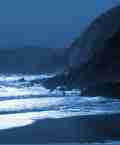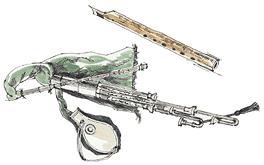 |
 | |||
 Irish Dance MusicIrish dance and the music of Ireland are inextricably linked over centuries. An assortment of instruments has provided the music for dancing throughout the centuries. Formerly the bagpipe was the most popular instrument, but today it is more common to find dancers being accompanied by an accordion, a fiddle or a piano.
In 1601 when pipers were outlawed by the English authorities and their instruments were destroyed, they found a way of overcoming the problem. They made whistles from corn cobs During the eighteenth century, harpers wandered the roads of Ireland, playing only when they were certain their music would not alert the English authorities. These notable musicians kept their fingernails very long. With the gradual relaxation of the Penal Laws, the harpers were invited to play their tunes in the Great Halls of princes and lords. Often the lord welcomed the harper to perform and commissioned him to compose a tune in honour of his family's honour. Lord Inchiquin and Lady Eleanor Brabazon are examples of two compositions written to honour aristocrats. The harper was a respected man and was welcomed everywhere. In later years, the harpers, were to team up with the dancing masters. Many of the dancing masters were expert musicians themselves, and if a musician was unavailable they could perform on the pipes, fiddle or flute. Quite a number of them composed their own tunes for their newly arranged set dances. Bagpipers or harpers were the principal musicians - particularly in the seventeenth century but when they were prevented playing in public by legislation, an assortment of other musicians provided the beat. Many of these musicians were blind or had other physical diabilities, and music offered them a reasonable regular income. The most famous of these was the blind harper, Carolan, who delighted the gentry in the "big houses" with his playing. He is best known for his Carolan's Concerto. > > > Read the concluding part of this article. From Irish Dance by Authur Flynn. Illustrated by Anne Farrall. |
[ Back to top ]
All Material © 1999-2018 Irelandseye.com and contributors

 (the woody centre in a stalk of corn). They cut holes in the improvised whistle to cover with the fingers and made a corn-pipe, an instrument similar to today's tin-whistle. It was not until about 1700 that the modern uillean pipes were invented. This new instrument had a much milder and modified tone than that of the war pipes.
(the woody centre in a stalk of corn). They cut holes in the improvised whistle to cover with the fingers and made a corn-pipe, an instrument similar to today's tin-whistle. It was not until about 1700 that the modern uillean pipes were invented. This new instrument had a much milder and modified tone than that of the war pipes.